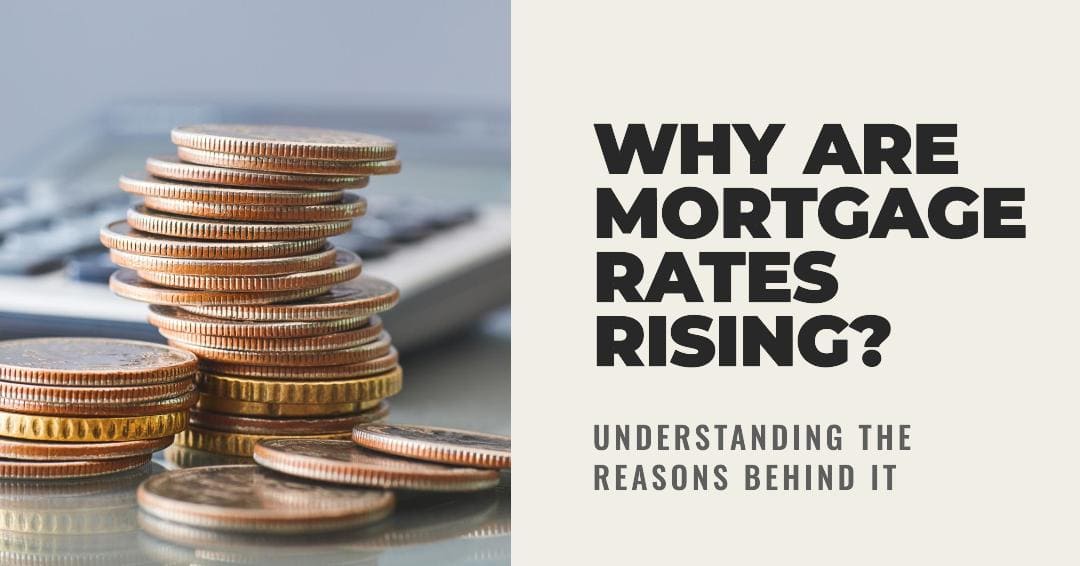The landscape of the US housing market is ever-evolving, and with it, the dynamics of mortgage rates. As we navigate through 2024, a noticeable trend has been the rising mortgage rates, which have become a topic of interest for potential homebuyers, investors, and economists alike. To understand the reasons behind this increase, it's essential to delve into the economic factors and policies that play a pivotal role in shaping mortgage rates.
Table of Contents
Understanding the Rise of Mortgage Rates in 2024
Monetary Policy and Federal Reserve Decisions
One of the primary drivers of mortgage rates is the monetary policy set by the Federal Reserve. The Fed's decision to raise or lower interest rates can have a domino effect on the economy, influencing various rates, including those for mortgages. In recent years, the Fed has implemented rate hikes to combat inflation, which remains above their target level. These actions, although indirectly, have contributed to the upward trajectory of mortgage rates.
Inflation and Consumer Demand
Inflation is another significant factor that affects mortgage rates. When inflation is high, lenders increase rates to maintain their profit margins. The US has experienced a period of elevated inflation, prompting lenders to adjust mortgage rates accordingly.
Consumer demand and housing supply also play crucial roles. High demand for homes, coupled with a limited supply, can drive up home prices and, consequently, mortgage rates. The strength of the economy and the status of the bond market, particularly the 10-year Treasury yields, are additional elements that influence mortgage rates.
Forecasts and Predictions
The forecast for mortgage rates in 2024 has been the subject of varied predictions by experts. While some anticipate a decrease in rates as the year progresses, others suggest that rates may hover in the higher range for most of the year. Factors such as the budget deficit, inflation metrics, and economic shocks are considered when making these predictions.
For homebuyers, the rise in mortgage rates translates to higher monthly payments and increased borrowing costs. This shift can affect affordability and the decision to purchase a home. Potential buyers must stay informed about the trends and forecasts of mortgage rates to make well-informed financial decisions.
Expert Analyses and Forecasts
The forecasts for the remainder of the year suggest a gradual decline in mortgage rates, which is welcome news for potential homebuyers who have been facing a challenging market.
According to expert analyses, the average 30-year fixed mortgage rate, which stood at 6.79% at the end of March 2024, is expected to decrease over the course of the year. Freddie Mac predicts that rates will remain above 6.5% through the current quarter but could drift down to about 6% by the year's end. Similarly, Fannie Mae‘s housing forecast anticipates the 30-year fixed rate mortgage to average 6.3% in Q2 and slowly decline, reaching a Q4 average of 5.9%.
The National Association of Realtors' chief economist, Lawrence Yun, expects that the mortgage rates will likely be in the 6% to 7% range for most of the year, considering the high budget deficit and inflation metrics above the comfort level. On the other hand, the Mortgage Bankers Association (MBA) has a baseline forecast for mortgage rates to end 2024 at 6.1% and reach 5.5% at the end of 2025 as Treasury rates decline and the spread narrows.
The potential rate cuts by the Federal Reserve are a significant factor that could breathe new life into the housing market. Bank of America‘s head of retail lending, Matt Vernon, notes that while significant drops in mortgage rates might not occur in the early months of 2024, any reductions will likely be gradual, possibly beginning in the latter part of the year.
Consumers need to consider these forecasts while planning their finances, especially if they are in the market for a new home. While the exact path of mortgage rates cannot be predicted with certainty, the consensus among experts points to a slow but steady rate decline, which could improve home affordability and influence buying decisions.
As we look toward the future, the trajectory of mortgage rates will continue to depend on a complex interplay of economic indicators and policy decisions. Keeping a close eye on these developments is key for anyone involved in the housing market.




